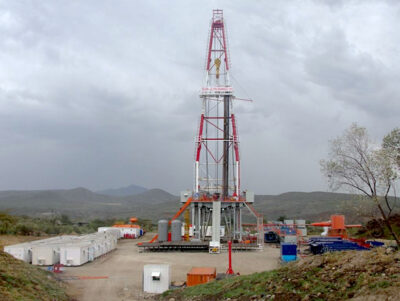Geothermal key to Kenya’s power shortage
Geothermal energy is the answer to Kenya's unreliable and expensive electricity. The country’s geothermal potential is estimated at more than 7,000 megawatts compared to the current output of 1,100 MW.
As reported in Kenya, “Geothermal energy is the answer to the (country’s) unreliable and expensive electricity, an investment adviser has said. The country’s geothermal potential is estimated at more than 7,000 megawatts compared to the current output of 1,100 MW.
Sixty two per cent of the existing power production is from hydropower, which is undependable because it relies on rainfall, while more than half of the remainder comes from thermal, an expensive source of electricity because it is oil-fired.
During power crises, the government routinely procures high cost emergency thermal electricity. For instance, while Kenya pays around 12 United States cents (Sh9.36) per kilowatt-hour to buy electricity from renewable sources, emergency power generators are paid 20 US cents (Sh15.60) for the same unit.
During the 2006 drought, the year in which the government used emergency thermal power generators for a year, operators were paid Sh34.4 billion.
“We need to keep away from thermal power generation and invest more in geothermal power because we believe it will be the next frontier for energy generation,” said Stanbic Investment Management Services (Sims) chief investment officer Anthony Mwithiga.
He told a media briefing in Nairobi on Wednesday that geothermal was the only source of electricity that would reduce costs and guarantee supply. Currently, 14 per cent of the Kenya’s electricity generation is from geothermal sources.
In recent droughts, geothermal energy played a critical role as it continued to operate at nearly 100 per cent when many of the hydropower stations were crippled by the dry spells.
Geothermal energy is generated by drilling deep holes into the earth’s crust, pumping cold water through one end so that by the time it gets back to the surface, the water can be hundreds of degrees Celsius hot which is then used as steam to drive a turbine which in turn drives a generator, thus creating power.
Sims investment manager Kenneth Kaniu said other countries in the region were leveraging on their natural resources to produce electricity.
“Uganda intends to use thermal because it has found oil while Tanzania is intensifying power generation using its huge reserves of natural gas,” he said. “These countries will be very competitive compared to Kenya in regard to cost of production.”
Kenya, at Sh14.04 (19 US cents) per kilowatt-hour, remains the most expensive country in the region. Electricity consumers in Uganda pay an equivalent of Sh9.20 (12.4 US cents) per kilowatt-hour, while in Tanzania it is cheaper at Sh7.64 (10.3 US cents) per kilowatt-hour.”
Source: Kenya Daily Nation











